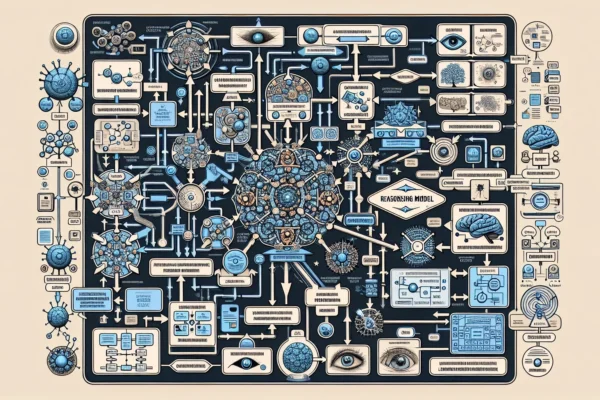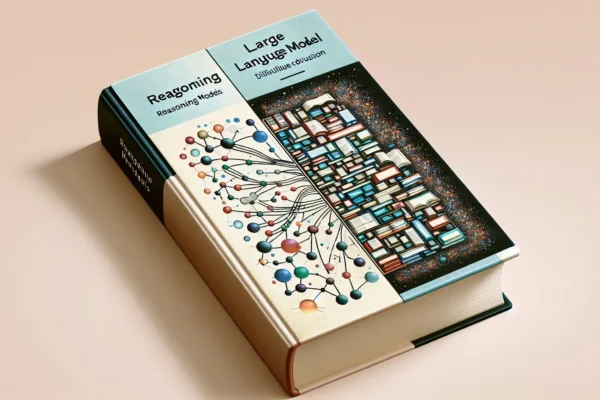AI Healthcare: Revolutionizing Patient Care
I. AI’s Diagnostic Prowess: Precision and Speed
Artificial intelligence is dramatically altering the landscape of medical diagnostics, offering speed, accuracy, and potential for early disease detection that surpasses traditional methods. The ability of AI algorithms to sift through vast datasets of medical images, patient histories, and genetic information is uncovering patterns and insights previously hidden from human clinicians.
A. Radiography and Image Analysis:
AI’s impact is most evident in radiology. Deep learning models, trained on millions of X-rays, CT scans, and MRIs, can identify subtle anomalies indicative of diseases like cancer, fractures, and cardiovascular conditions. These algorithms often achieve diagnostic accuracy comparable to, or even exceeding, that of experienced radiologists. Key applications include:
- Lung Cancer Detection: AI analyzes chest X-rays and CT scans for suspicious nodules, flagging potential tumors for further investigation. Early detection significantly improves survival rates. Software like Google’s Lung AI promises to improve early detection rates.
- Breast Cancer Screening: AI analyzes mammograms to detect subtle signs of breast cancer, reducing false positives and negatives. Numerous studies have demonstrated the ability of AI to improve the accuracy of mammography screenings.
- Brain Imaging: AI assists in identifying strokes, aneurysms, and other brain abnormalities on CT and MRI scans, enabling faster treatment and reducing neurological damage.
- Fracture Detection: AI algorithms can quickly and accurately identify fractures on X-rays, even in complex cases, aiding in timely treatment and pain management.
B. Pathology and Histopathology:
AI is transforming the field of pathology by automating the analysis of tissue samples. Digital pathology involves scanning microscope slides and using AI algorithms to identify cancerous cells, quantify biomarkers, and assess disease severity. This technology offers several advantages:
- Increased Efficiency: AI can automate the tedious and time-consuming process of manually counting cells and measuring tissue structures, freeing up pathologists to focus on more complex cases.
- Improved Accuracy: AI algorithms can reduce inter-observer variability and improve the consistency of diagnoses.
- Quantitative Analysis: AI can provide precise measurements of cellular and tissue characteristics, enabling more accurate prognostication and treatment planning.
- Drug Development: AI assists in analyzing tissue samples from clinical trials, accelerating the discovery and development of new drugs.
C. Genetic Diagnostics:
AI is playing a crucial role in analyzing genomic data to identify genetic predispositions to diseases, predict drug responses, and personalize treatment strategies.
- Genome Sequencing Analysis: AI algorithms can analyze vast amounts of genomic data to identify disease-causing mutations and predict an individual’s risk of developing certain conditions.
- Personalized Medicine: By integrating genomic data with clinical information, AI can help tailor treatments to an individual’s specific genetic profile, improving efficacy and reducing side effects.
- Drug Target Discovery: AI can identify novel drug targets by analyzing genomic data and identifying genes and proteins that are involved in disease development.
II. Personalized Treatment: Tailoring Care for Optimal Outcomes
AI is enabling the development of personalized treatment strategies that take into account an individual’s unique characteristics, including their genetics, lifestyle, and medical history. This approach promises to improve treatment outcomes and reduce the risk of adverse effects.
A. Predictive Analytics for Treatment Response:
AI algorithms can predict how a patient will respond to a particular treatment based on their individual characteristics. This information can help clinicians choose the most effective treatment option for each patient.
- Oncology: AI can predict a patient’s response to chemotherapy or immunotherapy based on their genetic profile and tumor characteristics.
- Cardiology: AI can predict a patient’s risk of developing heart failure or stroke based on their medical history and lifestyle factors.
- Mental Health: AI can predict a patient’s response to antidepressants or other mental health treatments based on their genetic makeup and symptoms.
B. Robotic Surgery and Precision Medicine:
AI-powered robots are assisting surgeons in performing complex procedures with greater precision and accuracy. These robots can also be used to deliver targeted therapies directly to the site of the disease.
- Minimally Invasive Surgery: AI-powered robots allow surgeons to perform minimally invasive procedures with smaller incisions, leading to faster recovery times and reduced pain.
- Targeted Drug Delivery: AI-controlled robots can deliver drugs directly to the site of the tumor, minimizing side effects and improving treatment efficacy.
- Spine Surgery: AI-guided robotics are used for spinal fusion and other spinal surgeries to improve accuracy and reduce the risk of complications.
C. Wearable Sensors and Remote Patient Monitoring:
Wearable sensors and remote patient monitoring devices are generating vast amounts of data on patients’ vital signs, activity levels, and sleep patterns. AI algorithms can analyze this data to identify potential health problems early on and personalize treatment plans.
- Early Detection of Deterioration: AI can detect subtle changes in vital signs that may indicate an impending health crisis, such as a heart attack or stroke.
- Personalized Diabetes Management: AI can analyze blood glucose levels and insulin dosages to personalize diabetes management plans.
- Remote Monitoring of Chronic Conditions: AI can monitor patients with chronic conditions, such as heart failure or COPD, remotely, allowing clinicians to intervene early if their condition worsens.
III. Streamlining Healthcare Operations: Efficiency and Cost Reduction
AI is automating many administrative and operational tasks in healthcare, freeing up clinicians to focus on patient care and reducing costs.
A. Automated Scheduling and Appointment Reminders:
AI-powered scheduling systems can optimize appointment scheduling, reduce wait times, and send automated appointment reminders to patients.
- Optimized Scheduling: AI algorithms can take into account patient preferences, clinician availability, and resource constraints to optimize appointment scheduling.
- Reduced No-Shows: Automated appointment reminders can reduce the number of no-shows, improving efficiency and reducing lost revenue.
B. Claims Processing and Fraud Detection:
AI can automate the process of claims processing and detect fraudulent claims, saving healthcare providers and insurance companies significant amounts of money.
- Automated Claims Review: AI algorithms can automatically review claims for accuracy and completeness, reducing the need for manual review.
- Fraud Detection: AI can identify suspicious patterns in claims data that may indicate fraudulent activity.
C. Supply Chain Management and Inventory Optimization:
AI can optimize supply chain management and inventory levels, ensuring that healthcare providers have the supplies they need when they need them, while minimizing waste and reducing costs.
- Demand Forecasting: AI can predict demand for medical supplies and equipment, allowing healthcare providers to optimize inventory levels.
- Waste Reduction: AI can identify opportunities to reduce waste and improve efficiency in the supply chain.
IV. Ethical Considerations and Challenges
While AI holds immense promise for revolutionizing healthcare, it also raises several ethical considerations and challenges that must be addressed.
A. Data Privacy and Security:
Protecting patient data privacy and security is paramount. AI algorithms rely on large datasets of sensitive patient information, making them vulnerable to cyberattacks and data breaches.
B. Bias and Fairness:
AI algorithms can perpetuate and even amplify existing biases in healthcare if they are trained on biased data. It is crucial to ensure that AI algorithms are fair and equitable for all patients, regardless of their race, ethnicity, or socioeconomic status.
C. Transparency and Explainability:
AI algorithms can be complex and opaque, making it difficult to understand how they arrive at their conclusions. Transparency and explainability are essential for building trust in AI systems and ensuring that clinicians can understand and interpret their outputs.
D. Job Displacement:
The automation of tasks in healthcare could lead to job displacement for some healthcare workers. It is important to consider the potential impact of AI on the healthcare workforce and develop strategies to mitigate any negative consequences.
E. Regulatory Frameworks:
Developing appropriate regulatory frameworks for AI in healthcare is crucial to ensure that these technologies are used safely, effectively, and ethically.
V. Future Directions
The future of AI in healthcare is bright. As AI technology continues to advance, we can expect to see even more innovative applications that transform patient care. Future trends include:
- AI-powered Drug Discovery: AI will accelerate the discovery and development of new drugs by identifying potential drug targets and predicting drug efficacy.
- AI-driven Clinical Trials: AI will optimize clinical trial design and recruitment, leading to faster and more efficient clinical trials.
- AI-enabled Personalized Health Coaching: AI will provide personalized health coaching to help patients adopt healthier lifestyles and manage chronic conditions.
- AI-assisted Mental Health Support: AI will provide virtual mental health support to individuals who are struggling with anxiety, depression, or other mental health conditions.
- Integration with the Metaverse: Virtual reality and augmented reality powered by AI will transform medical training, patient education, and rehabilitation.
The successful integration of AI into healthcare requires collaboration between clinicians, data scientists, policymakers, and patients. By addressing the ethical considerations and challenges and fostering collaboration, we can harness the power of AI to improve patient care and create a healthier future for all.



